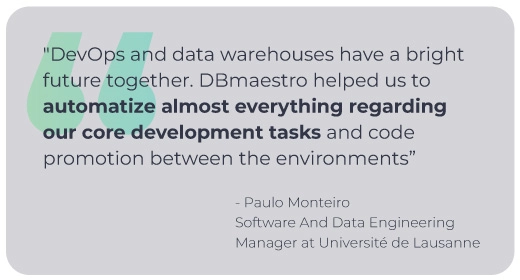Data is the Corporate Treasure
In today’s digital economy, data has become the lifeblood of organizations. It drives decision-making, powers insights, and is often considered the most valuable corporate asset. A 2023 study by Gartner highlights that 91% of companies recognize data as a critical enabler of their business strategy. Data isn’t just a byproduct of operations; it’s the treasure trove that organizations rely on to stay competitive and evolve.
From customer preferences to financial reports, inventory control, and supply chain management—everything is governed by the data that flows through modern businesses. But for all its power, data’s value is not just in the raw numbers—it’s in the way that data is structured, stored, and accessed. That’s where metadata comes into play, acting as the treasure map that guides us through the complexity of the data landscape.
Metadata: The Treasure Map
Metadata is the often-overlooked piece of the puzzle. While data provides the “what,” metadata provides the “who, what, when, where, and how” about that data. Metadata tells us where data is stored, how it should be used, and who has access to it. Think of it as the blueprint or treasure map that helps organizations understand and manage their data effectively.
Despite its importance, metadata is frequently managed manually or, even worse, neglected altogether. The paradox here is striking: organizations invest millions in data warehousing, analytics platforms, and data management systems, but without properly maintained metadata, they’re essentially wandering in the dark. According to a study by IDC, organizations spend nearly 30% of their IT budgets on data management, yet a significant portion of that investment goes to waste due to poor metadata management.
The same IDC study revealed that 67% of organizations reported issues with their data governance practices, primarily due to manual processes and lack of automation in metadata handling. This kind of inefficiency becomes absurd when you consider the high stakes: corporate decisions, from quarterly financial reporting to inventory allocation, all depend on well-maintained, accurate data. Without properly governed metadata, it’s like owning a treasure chest but losing the map that leads to it.
The Absurdity of Neglecting Metadata
Think about it: organizations spend massive amounts of money to build and maintain complex data warehouses and analytics platforms. They rely on data for everything from daily operations to strategic decision-making, betting their future on the insights gained from this data. Yet, despite this enormous investment, many organizations still allow developers and data teams to manage schema changes without any oversight or control.
This becomes even more troubling when we consider the business implications. For example, schema changes without segregation of duties can directly impact critical business processes like quarterly financial reporting. If a developer makes an error when modifying the database structure, it can cause delays in reporting, inaccuracies in financial statements, or worse—compliance failures. Similarly, a poorly managed change can skew inventory allocations, leading to overstocking or shortages, both of which can hurt the bottom line.
A 2022 survey conducted by the Data Governance Institute found that 72% of organizations experienced at least one critical failure due to poor change management practices, and 45% of those failures directly impacted financial reporting. These statistics highlight the absurdity of neglecting metadata management when so much of an organization’s success depends on it.

The Hidden Costs of Manual Change Management
Most organizations understand the risks posed by data security threats, but they fail to recognize the equally damaging vulnerabilities created by manual change management processes. The risk here is not just operational but also strategic. When schema changes are made without proper control, there’s a very real chance that these changes will disrupt critical business functions.
Data warehousing and analytics platforms are not static entities. They evolve as business needs change, but each evolution comes with risk. Without an automated system to manage these changes, the organization is left vulnerable. Manual processes are not only time-consuming but also prone to human error. A 2023 report by Ponemon Institute found that 43% of data breaches were caused by misconfigurations—often the result of manual processes that failed to account for all changes in the data environment.
Consider a real-world example: A global retail company experiences a data schema change during the busiest quarter of the year. The change was implemented without proper oversight, and as a result, the company’s inventory system was unable to sync with its sales data, causing massive shortages in stores and an excess of unsellable stock in its warehouses. The financial impact was devastating—tens of millions in lost sales during a critical season. The root cause? A failure to manage and track metadata during a routine change to the data warehouse.
DBmaestro: The GPS Navigation System for Corporate Treasure
This is where DBmaestro enters the picture. If data is the treasure and metadata is the map, then DBmaestro is the GPS navigation system that ensures organizations reach their destination safely and securely. DBmaestro is a database DevSecOps platform designed to automate and secure database release automation, offering a comprehensive solution to manage changes, secure data, and ensure that all metadata is up-to-date and synchronized across all teams and systems.
Securing the Data Treasure
DBmaestro goes beyond just automating database changes—it ensures that every change is secure, documented, and compliant with industry standards. With role-based access control and segregation of duties, DBmaestro makes it impossible for unauthorized users to make changes that could impact critical business functions. By automating these controls, DBmaestro reduces the risk of human error and ensures that only approved changes are made to the database.
Automating Metadata Management
Perhaps one of DBmaestro’s greatest strengths is its ability to automatically update and manage metadata. This is particularly important in fast-paced DevOps environments where changes happen frequently. By maintaining an up-to-date map of all database changes, DBmaestro ensures that every developer, DBA, and data stakeholder is on the same page, eliminating confusion and reducing the likelihood of errors.
Compliance and Regulatory Adherence
In today’s regulatory landscape, compliance is non-negotiable. Whether it’s GDPR, HIPAA, or SOX, organizations must ensure that their data practices meet stringent requirements. DBmaestro provides full audit trails, ensuring that every change to the database is documented and easily retrievable. This not only helps with regulatory compliance but also provides peace of mind for data chiefs and CISOs, knowing that their data treasure is well-protected.
Real-Time Monitoring and Alerts
DBmaestro also offers real-time monitoring and alerts for database changes, allowing teams to catch potential issues before they become full-blown problems. This proactive approach minimizes downtime and ensures that critical systems remain operational, even during updates and changes.
Integration with Existing Toolchains
DBmaestro integrates seamlessly with popular DevOps tools such as Jenkins, Git, Jira, and others, making it easy to include database change management in the broader CI/CD pipeline. This ensures that database changes are treated with the same level of rigor and automation as application code, further enhancing security and reducing the risk of errors.
Conclusion: The Path Forward
Organizations can no longer afford to treat metadata as an afterthought or manage database changes manually. The risks are too high, and the stakes are too great. With the rise of data-driven decision-making, the corporate treasure—your data—must be protected, and the metadata guiding it must be meticulously maintained.
DBmaestro provides a comprehensive solution that automates database release management, secures data, and ensures compliance with industry regulations. By using DBmaestro, organizations can not only protect their data treasure but also ensure that all stakeholders have access to an up-to-date map of the database landscape. In a world where data is king, DBmaestro is the navigation system that leads the way.
Investing in DBmaestro isn’t just a smart move—it’s a necessity for any organization serious about protecting its most valuable asset: its data.






